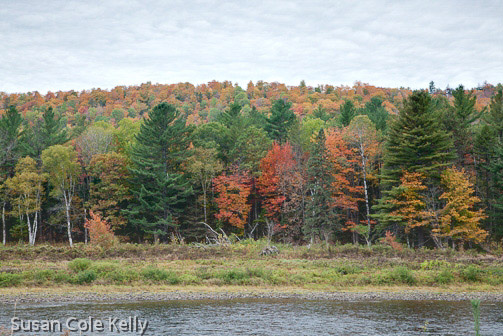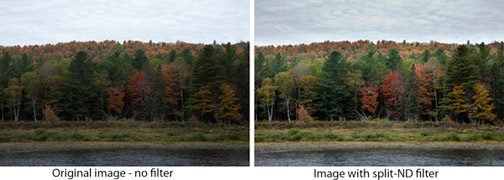Magazine
Winter Photography Tips
My most common photographic problem is poor exposure caused by a white sky. Digital cameras often determine exposure by averaging the tones all over the photo. If the top half is white, the camera will make the bottom half very dark to compensate for the brightness. The result is a picture with an uninteresting white […]
My most common photographic problem is poor exposure caused by a white sky. Digital cameras often determine exposure by averaging the tones all over the photo. If the top half is white, the camera will make the bottom half very dark to compensate for the brightness. The result is a picture with an uninteresting white sky and a bottom that is too dark to see.
So what can be done to fix this problem? A few things! First, I try to point my camera down a bit and re-compose my picture to include less of the sky. Or I try to zoom in, isolating my subject without including the sky. Then I look very carefully at my viewing screen to see if the exposure is better.
When I’m using my compact camera, I have to trick it to override its exposure program. First I compose my picture. Then I point the camera down a bit so there’s not much sky in the picture. I press the shutter button half-way and hold it there. Then I return to my original composition and take the picture. It takes some practice, and I need to check my viewing screen carefully, but this technique helps me have some exposure control with a point-and-shoot camera.
 I also have a good DSLR. When there’s a difficult exposure situation, I can set the exposure compensation control to lighten the picture. When I’m unsure, I bracket. Bracketing is the technique of shooting the picture normally, and then taking at least two more pictures at brighter and darker exposures. This gives me the ability to pick the best exposure later. In this case, I like the brightest version better than the original exposure my camera picked.
I also have a good DSLR. When there’s a difficult exposure situation, I can set the exposure compensation control to lighten the picture. When I’m unsure, I bracket. Bracketing is the technique of shooting the picture normally, and then taking at least two more pictures at brighter and darker exposures. This gives me the ability to pick the best exposure later. In this case, I like the brightest version better than the original exposure my camera picked.
 Shooting bracketed photos also allows me to combine the bracketed exposures in HDR software. This software brings out the detail in both bright and dark areas in an image.
Shooting bracketed photos also allows me to combine the bracketed exposures in HDR software. This software brings out the detail in both bright and dark areas in an image.
 If there’s any interesting detail in the clouds, I use a split-neutral-density filter to darken them. This filter is clear on the bottom and tinted gray on the top, with a soft graduation between the halves. I position the shaded part over the sky to darken it. The filters come in different strengths. In extreme situations, like sunrise, I use two of them.
Snow Presents the same problem as white sky. Too much brightness on the bottom of the picture throws off the exposure. So I use the same techniques to shoot snow scenes. A friend has a compact camera with a SNOW mode. This setting automatically brightens the pictures and can be used for snow or white sky. Check your camera manual to see if you have this setting.
In the end, I want the most important part of my picture to be well-exposed. Fortunately, there are lots of ways to make this happen.
If there’s any interesting detail in the clouds, I use a split-neutral-density filter to darken them. This filter is clear on the bottom and tinted gray on the top, with a soft graduation between the halves. I position the shaded part over the sky to darken it. The filters come in different strengths. In extreme situations, like sunrise, I use two of them.
Snow Presents the same problem as white sky. Too much brightness on the bottom of the picture throws off the exposure. So I use the same techniques to shoot snow scenes. A friend has a compact camera with a SNOW mode. This setting automatically brightens the pictures and can be used for snow or white sky. Check your camera manual to see if you have this setting.
In the end, I want the most important part of my picture to be well-exposed. Fortunately, there are lots of ways to make this happen.



Susan Cole Kelly is a compulsive shutterbug based in Boston and downeast Maine. You can see more of her work and purchase prints at http://susancolekelly.photoshelter.com/
Follow her personal blog at http://susancolekelly.blogspot.com/


